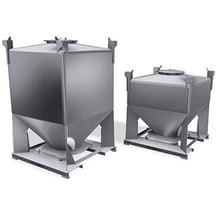‘Garage entrepreneurs’ entering the market for sports nutrition products are enjoying great success at a small scale – but how do you scale up business to cater for mass-market appeal? We discuss the things to consider when designing a manufacturing facility for mass-market sports nutrition products.
The sports nutrition market
Once the preserve of bodybuilders and professional athletes, recent research carried out by 'Mintel' found that as many as one in four Britons had consumed a sports nutrition product within the last 3 months. Of these, almost half (47%) said they consume sports nutrition products as a part of their everyday diet.
In fact, an increasing health and body-conscious population has seen the demand for products like protein shakes, energy drinks, nutrition bars, and performance supplements grow to accommodate an industry that in 2015 was worth over £66 million in the UK.
Specialist vs. mass market sports nutrition
‘Garage entrepreneurs’ – small-scale start-ups that often, quite literally, start manufacturing in a garage or spare room – have enjoyed great success when getting started in sports nutrition manufacturing. However, once demand begins to grow, it can be a challenge for a small business to scale up its capacity.
Specialist sports nutrition products, typically manufactured in small batches but with a wide diversity of niche products, certainly have greater profit potential per unit – customers find higher unit prices more acceptable if they are convinced that the product is specially tailored to their precise needs.
However, with the appeal of sports nutrition products expanding to an ever-widening demographic, the mass-market production of sports nutrition goods – characterised by large batch sizes, higher-volume sales, and fewer, more generalised recipes, should not be overlooked as something that only the biggest corporate manufacturers can achieve.
Lean manufacturing in sports nutrition
When getting started in sports nutrition manufacturing, working from a garage or small factory, the way in which products are made is often not as important as the products themselves. Yet to scale up, it is important to pay as much attention to the individual steps of the manufacturing process, and the ways in which ingredients and products are moved between these steps, in order to operate production lines that are as ‘lean’ as possible.
Lean manufacturing is all about maximising profit by reducing as much waste as possible – and this is particularly important when making large batches of product for the mass market, in high volume and at low cost. Any product wasted is profit wasted!
Sources of waste in the manufacturing process
Waste can be generated at many different stages of production, but some of the most common ones include:
- Ingredient dust escaping from your recipe when filling or discharging vessels;
- The residue left behind in vessels when transferring material from one process to another, or ingredients that get stuck and are washed away during cleaning and maintenance;
- Contaminated or substandard recipe blends that must be discarded;
- Slow production caused by bottlenecks along the line that limits capacity.
Intermediate Bulk Containers make lean manufacturing possible
Reducing or even completely eliminating these and other sources of waste ensures that as much of your investment as possible is translated into saleable sports nutrition products.
One way to both scale up capacity and reduce waste is to implement Int ermediate Bulk Container (IBC)-based production lines. Affordable, flexible and available in a variety of sizes, Matcon IBCs are used to handle any type of powder or solid particle materials efficiently and cleanly. They greatly reduce waste from dust since they are dust-tight, which further significantly reduces the potential for cross-contamination.
ermediate Bulk Container (IBC)-based production lines. Affordable, flexible and available in a variety of sizes, Matcon IBCs are used to handle any type of powder or solid particle materials efficiently and cleanly. They greatly reduce waste from dust since they are dust-tight, which further significantly reduces the potential for cross-contamination.
What’s more, by using IBCs to move products between processing steps, each stage can be operated in an autonomous fashion at its optimum rate. As the full system is 'closed' at all times and the product is contained within the IBC, it is possible to handle multiple different recipes at the same time without the risk of cross-over. Thereby offering full production flexibility.

.png?width=600&height=100&name=SportsNutrition-Production%20(1).png)
